Unpacked: Why Israel, unlike Iran, orchestrates media blackout of its military fatalities
By Syed Zafar Mehdi
In a retaliatory military operation after weeks of strategic restraint, Iran launched a symphonic barrage of long-range ballistic missiles at key Israeli military installations in and around Tel Aviv on October 1.
Each missile with a heavy warhead found its mark, slipping past multiple layers of air defense as if they were mildly inconvenient clouds, leaving Israel’s much-hyped military infrastructure reeling.
As the dust settled and uncomfortable truths began to emerge, the Israeli regime swiftly enacted a media blackout, banning any discussion of the number of casualties or the extent of damage.
After all, invincibility is easier to claim when nobody sees the broken glass. The regime brags about its military invincibility and impenetrable radar systems. Iranian missiles made mincemeat of them.
Among the key targets were the "Tel Nof" airbase near Tel Aviv, the "Nevatim" airbase that houses F-35 warplanes, the "Ramon” airbase, and the "Hatzerim" airbase, among others.
For the few journalists audacious enough to report on “Operation True Promise II,” and the damage it caused, like Jeremy Loffredo of Grayzone website, daring came with a price: quick detainment and trumped-up charges—a modern “reward” for seeking the truth.
But information has a habit of leaking out, and so it did: reports of massive damage inflicted by Iranian missiles like the Ghadr, Emad, and the hypersonic Fattah-1—a reminder that not all high-tech military systems can withstand the power of Iranian missiles.
It’s not for nothing that Iran is today known as a missile and drone power in the world.
The missiles didn’t just destroy the military infrastructure. Scores of soldiers stationed at these bases also vanished into thin air, though Israel’s official line remained notably silent, preferring downplay over transparency, to avoid further embarrassment and humiliation.
A journalist who spoke to eyewitnesses there told me that the Nevatim Airbase, which has served as a launch point for deadly air operations against Gaza and more recently Lebanon and is located deep inside the Negev desert, said dozens of missiles landed inside the base, inflicting heavy damage.
The attack brought the base to a grinding halt and resulted in scores of military fatalities. The regime, however, refused to publicly acknowledge it.
"Israel won't achieve anything because we're united."
— Press TV 🔻 (@PressTV) October 26, 2024
Iranians react to the Israeli aggression on their country pic.twitter.com/SJA7FlMZXp
He also referred to the missiles that landed in Tel Aviv, near the Mossad headquarters, which destroyed a good part of the city block, resulting in both human and collateral losses. Again it wasn’t made public.
“Cars were entirely destroyed, debris covered everything in a 200-foot radius and the missile crater — which was at least 50 feet wide, was filled in and covered with dirt almost immediately by Israeli authorities, which underscores how embarrassing this was for Israel which boasts often about the efficiency of its billion-dollar missile defense systems,” the journalist told me.
Just weeks later, on October 18, the Lebanese Hezbollah resistance movement delivered a less subtle but strong message, this time with a drone dining-room delivery, straight to the Golani Brigade’s reconnaissance unit in the occupied city of Haifa.
Israeli media initially hesitated, before begrudgingly confirming five soldier deaths. However, as sources under the cloak of anonymity later revealed, the real number was much higher, buried under layers of secrecy and silence that have come to characterize the Zionist military’s standard operating procedure.
Recent ground battles between the Israeli military and Hezbollah resistance fighters in southern Lebanon have evidently driven Israeli forces to the breaking point, with eyewitness accounts suggesting Israeli fatalities in the hundreds, as well as destruction of Merkava tanks, military bulldozers, armored vehicles, troop carriers as well as Hermes 450 drones.
The regime in Tel Aviv, however, trickles out only a fraction of these grim numbers, counting soldiers in “tens” instead of hundreds to soften the blow to the morale of settlers who continue to live in fear.
On Sunday, an Israeli army spokesperson reluctantly announced the deaths of an officer and three soldiers from Battalion 8207, Alon Brigade (228) during the ground battles in southern Lebanon with Hezbollah under the "permitted to publish" clause. So, the publication of such content must fit these ambitious “clauses.”
The second Israel?
— Press TV 🔻 (@PressTV) October 22, 2024
A report by @dimitrilascaris has found a sharp rise in Israeli settlers' migration to Cyprus since October 7, 2023, with many seeking to purchase properties, including homes and land. pic.twitter.com/leYcLBpu4c
In Gaza, the death toll among Palestinians has tragically surpassed 43,000, most of them women and children, after one year of the genocidal aggression that began on October 7, 2023. Yet, the resilience and resolve of fighters from Al-Qassam Brigades, Al-Quds Brigades, and others shines through.
Daily bulletins from these groups paint a picture of complex operations that continue to exact a toll on regime forces, employing a repertoire that includes Qassam Ghoul rifles, Al-Yassin 105 shells, Shuath explosive devices, and Thaqib barrel bombs. Even the sticks that Martyr Yahya Sinwar immortalized.
But, we hardly hear anything from the Israeli military about the number of fatalities in these operations. They remain tight-lipped about the losses while bragging about their own genocidal crimes.
Iran openly acknowledged the martyrdom of four soldiers following Israeli strikes on its cities on Saturday. Neither Iran nor the Axis of Resistance, spanning Lebanon, Palestine, Yemen, and Iraq, covers up its losses. Hamas and Islamic Jihad in Gaza, Hezbollah in Lebanon, and Ansarullah in Yemen honor those who are killed in the struggle against the Israeli regime and its Western patrons.
These fighters die for a cause, a cause greater than personal ambition. Be it Hezbollah leader Sayyed Hassan Nasrallah, IRGC commander Abbas Nilforoushan or Hamas leader Yahya Sinwar, these men fought on the frontlines and embraced martyrdom. They yearned for it and were prepared for it.
As Leader of the Islamic Revolution Ayatollah Seyyed Ali Khamenei aptly observed in his remarks on Sunday, Zionists do not know Iran, the youth of Iran, the Iranian nation, and they have not yet properly understood the "power, capability, ingenuity and will of the Iranian nation."
"Zionist regime is suffering from miscalculation about Iran"
— Press TV 🔻 (@PressTV) October 27, 2024
Leader of Iran’s Islamic Revolution says Israel must be made to understand the power, resolve and initiative of the Iranian nation.
Follow us on Telegram: https://t.co/B3zXG73Jym pic.twitter.com/coX3CpQOi8
These child-murderers simply cannot fathom the spirit of Iran or the iron will of its people—let alone the resilience of Palestinians, Lebanese, and Yemenis, who wear martyrdom as a badge of honor.
This is precisely why massive funeral processions fill Tehran, Gaza, occupied West Bank, southern Lebanon, and Sana’a for martyrs as sacrifice for a cause is an honor for them. In contrast, Israeli regime forces and settlers are caught in a dilemma of not belonging anywhere and dying without any cause.
The Zionist entity is a cluster of illegal settlements occupied by settlers with no sense of belonging. While Zionists champion an agenda for their own political gains, those they command struggle to find conviction for a land they cannot call home, a land stolen from its original inhabitants.
Most settlers, like Benzion Mileikowsky (better known as Benjamin Netanyahu) of Polish descent, carry foreign passports as a safety net. The rhetoric of a “promised land” fails to inspire nationalism, for it’s difficult to feel pride for a territory forcibly and illegally seized from others.
In stark contrast to the unwavering conviction and resolve of resistance fighters, Israeli soldiers appear disconnected, fighting not for a cause but for political agendas, for settler-colonialism.
An important example of this disposability is the Hannibal Doctrine, a grim reminder from October 7, 2023, when Israeli forces killed their own to prevent their capture by Hamas fighters, leaving many regime soldiers and settlers forgotten, turned into cold, wasted statistics.
'Shame on you': Families of Israeli captives heckle Netanyahuhttps://t.co/6xQp9oLfMI
— Press TV 🔻 (@PressTV) October 28, 2024
In Iran, Palestine, and Lebanon, martyrs inspire generations to carry on their legacy. Sayyed Abbas Mousavi's torch was carried forward by Sayyed Hassan Nasrallah and Sheikh Yassin's legacy was preserved by Ismail Haniyeh and Yahya Sinwar. The movement grows and the ideology strengthens.
On the other hand, slain Israeli troops or settlers rarely receive public tributes. They are statistics rather than symbols. Since October 7, large numbers of settlers have fled the occupied territories, with the regime frantically slapping travel bans to curb the exodus.
Conscription is forced upon settlers unwillingly, with trauma and despair spreading like a second wave. If these settlers or mercenary troops had their way, they would book the next flight out of Tel Aviv. They know they don’t belong to the occupied land. They know it more today than ever before.
So Netanyahu understands that the disclosure of military fatalities would further demoralize a settler populace already plagued by fear and anxiety. The freeze on casualty reporting is a calculated move, a gambit to avoid a mass awakening to the occupation’s mounting costs.
Many Israeli soldiers and settlers perished on October 7 at the hands of the occupation military under the Hannibal Directive. Today, nobody knows them. They have been turned into cold statistics, wasted for an illegitimate entity with a shaky foundation increasingly staring at its annihilation.
This is one of the perils of living on land taken by force. An occupier can never truly belong to the occupied land and an occupied land can never be home. And a regime built on illusion and force will forever sit on a foundation of sand, eroded by every act of resistance and every name it tries to bury.
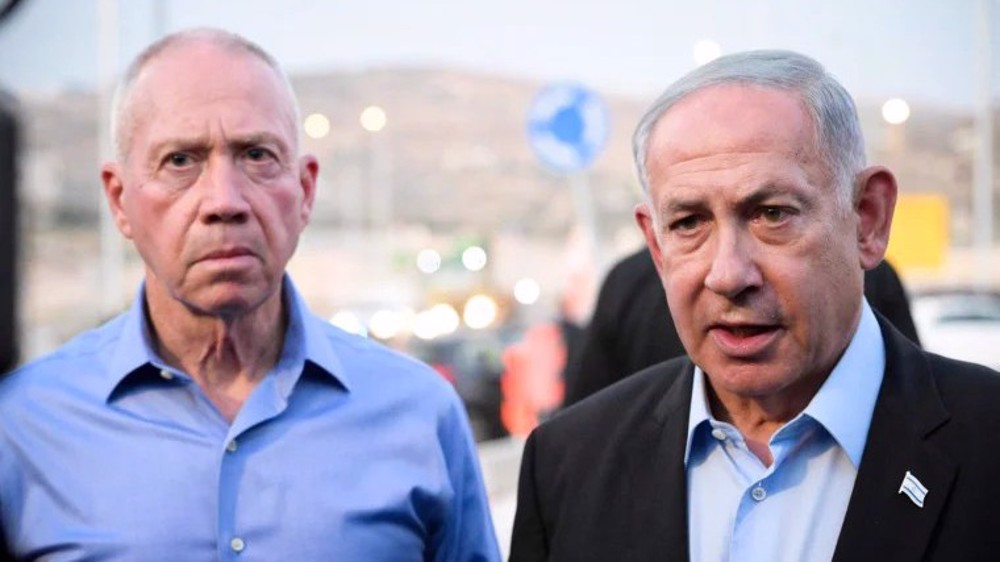
ICC rejects Israel’s request to cancel arrest warrants for Netanyahu
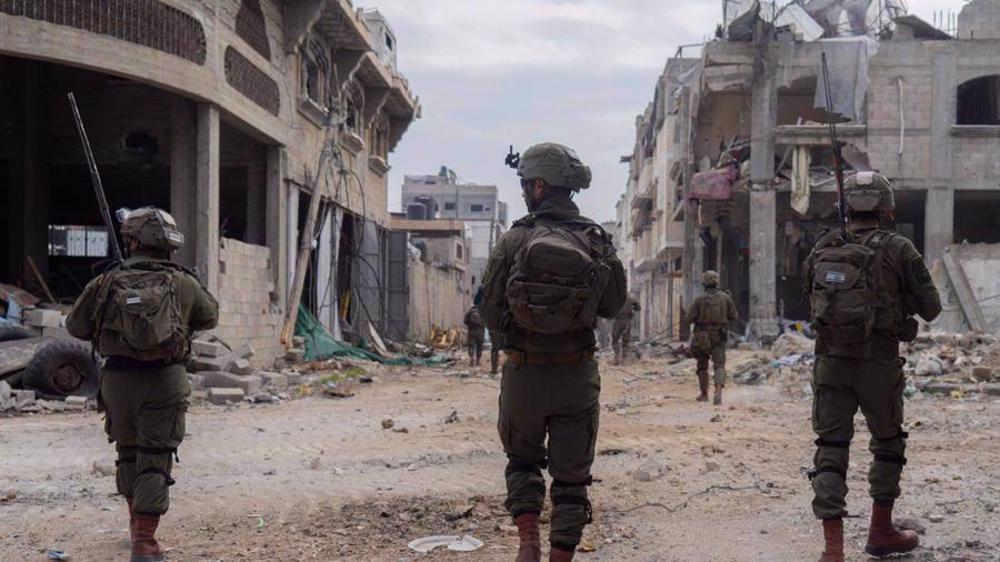
Israel threatens 'larger' war on Gaza with new evacuation orders
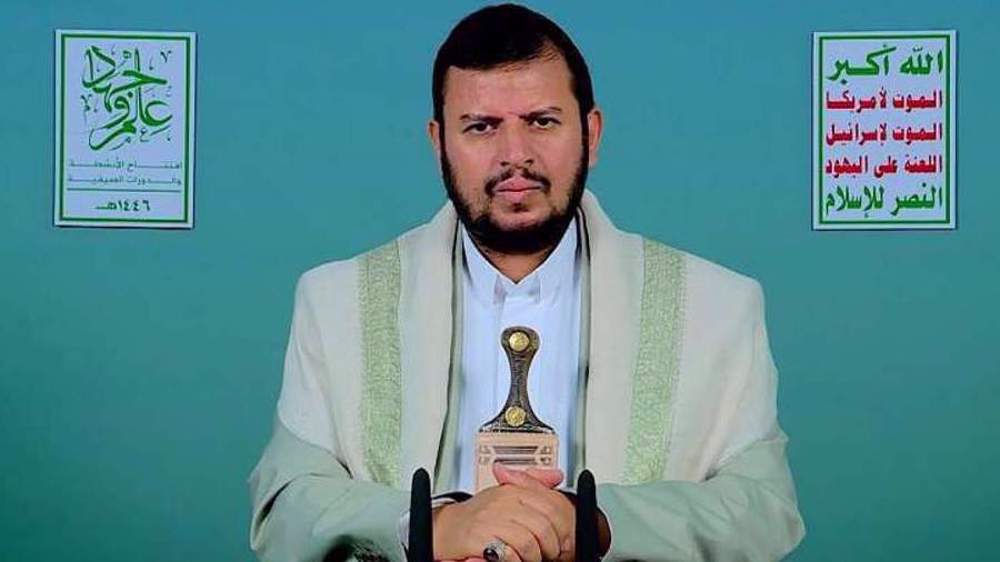
Houthi: Bab al-Mandab, Arabian Sea closed to Israeli, US ships
VIDEO | Press TV's news headlines
VIDEO | Russia to begin gas supplies to Iran via Azerbaijan, boosting energy ties
VIDEO | Protesters in Damascus slam Arab silence on Gaza
VIDEO | S African protestors decry America’s ongoing support for global aggression
VIDEO | Spokesperson: EU committed to diplomatic solution with Iran
Iran, Oman discuss arrangements for third round of indirect Tehran-Washington talks
Iran offers mediation as India-Pakistan tensions escalate
VIDEO | Massive rally in Yemen continues support for Palestine despite US aggression


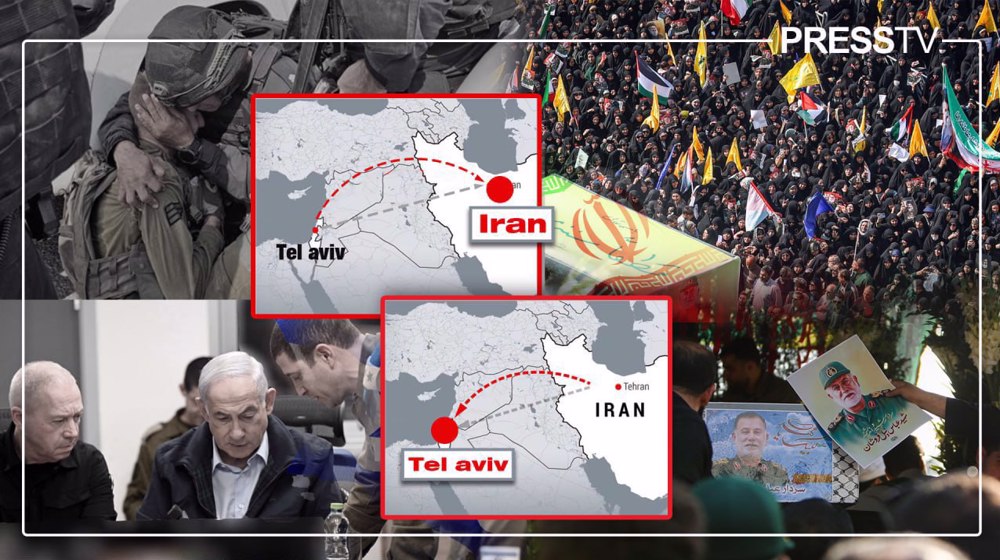




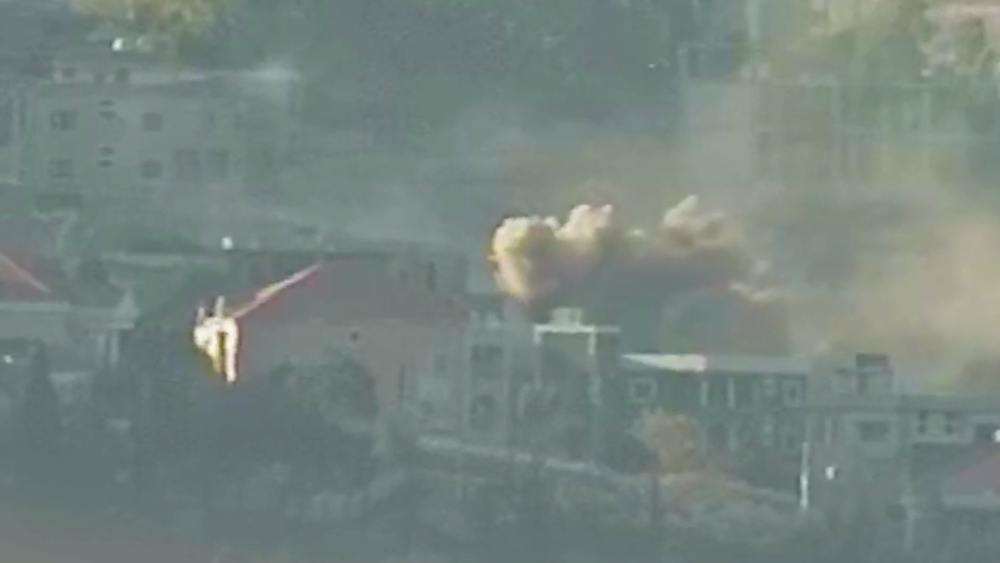

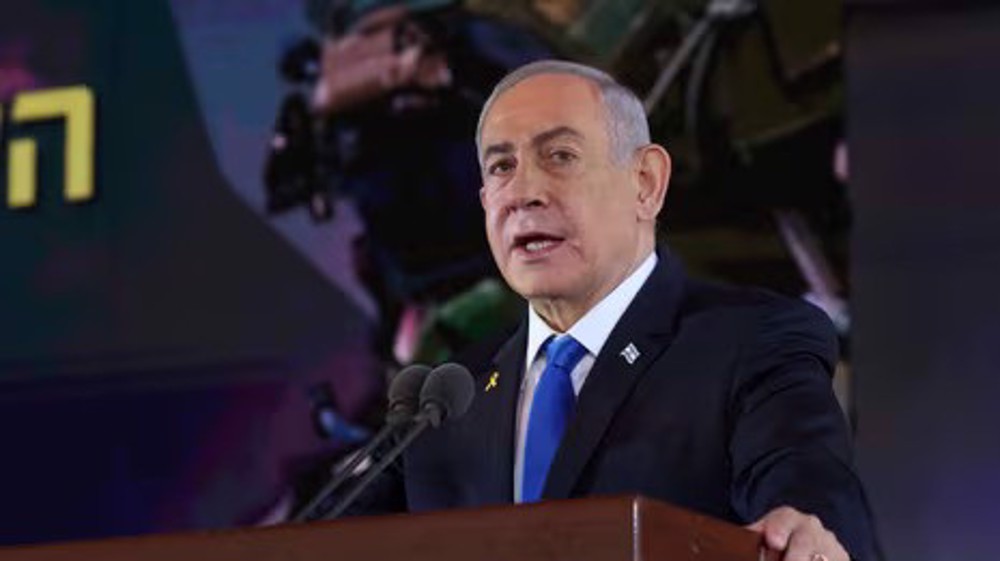


 This makes it easy to access the Press TV website
This makes it easy to access the Press TV website